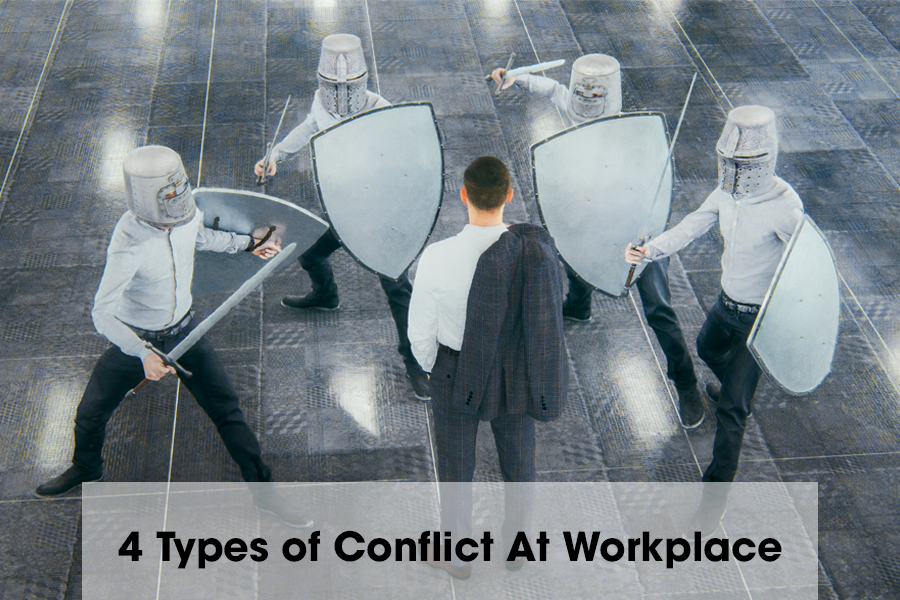1. Relationship
This is what we most often assume is happening when we get into a conflict-a clash of personalities.
What is it?
A personal disagreement. Sometimes called an interpersonal or emotional conflict, it’s when one or both of you feel disrespected or hurt. It includes:
- Snapping at each other in meeting
- Exchanging snarky emails
- Avoiding eye contact in the hallway
- Interrupting, or talking over, a colleague in a meeting
- Using a condescending tone to indicate your disagreement
- Arguing over who’s right and who’s wrong
Quite often a relationship conflict starts as something else. A disagreement over a project schedule escalates to bickering that disrupts a team meeting. Or a difference of opinion on the company’s strategy devolves into a heated debate about who’s right and who’s wrong. You may both have valid points, and good intentions, but some disagreements turn ugly. Annie McKee describes it this way: “In a perfect world, we follow the textbook advice, treat conflict logically, behave like adults, and get on with it. The problem is, we’re not working in a perfect world, and none of us is perfect. We each bring our own baggage to work every day. And some of ou insecurity, the desire for power and control, habitual victimhood-rear their heads again and again.”
2. Task
The most common source of disagreement at work is task conflict.
What is it?
A dispute over the goal of a task or project or what you’re trying to achieve. This includes disagreements about:
- The agenda for a staff meeting
- How the success of a new initiative should be defined or measured
- Whether the customers or the employees should come first
- How much risk a company should assume when partnering with other organizations
- Whe her to prioritize revenue or customer satisfaction
“The most common form of task conflict in organizations is functional,” explains Brett. Marketing, legal, and finance may look at the same problem and see it completely differently. For example, marketing may lobby to put the customer first, while legal’s aim is to protect the company from risk, and finance is trying to cut costs. Each may argue that their perspective on how to solve the problem is more important. “In reality, all those viewpoints and each functional way of addressing the problem are relevant and should be integrated into the solution,” says Brett.
3. Process
Another common type of conflict is not about what you’re doing but how you’re doing it.
What is it?
A disagreement over how to carry out a project or task, the means or process you use to reach your goal. This includes differences on:
- The best tactic for reaching a quarterly target
- How to implement a new HR policy
- How decisions should be made in a meeting
- How quickly a project should be completed
- Who should be consulted and included as the project is carried out
Process disagreements are easily confused with task conflicts. You think you’re arguing over the outcome when really you can’t agree on how to make a decision. For example, you might get locked into a battle with a coworker over the right strategy for a new project when what you need to settle is not the specific tactic but who gets to make the final call. Or you think the company should do customer research first and a coworker thinks it should get a good-enough product out in the market and see what happens.
4. Status
A less common-but still problematic-source of conflict is when people disagree over their standing within a group.
What is it?
A disagreement over who’s in charge or who deserves credit for the work. For example, you think you should be leading an initiative, while your worker thinks he should. It can also include:
- Jockeying for leadership, especially in a team without a formal or designated leader
- Competing to run a high-profile project
- Arguing over or dominating shared resources
- Competing for status symbols, such as the corner office, the latest technology, or having an administrative assistant.


